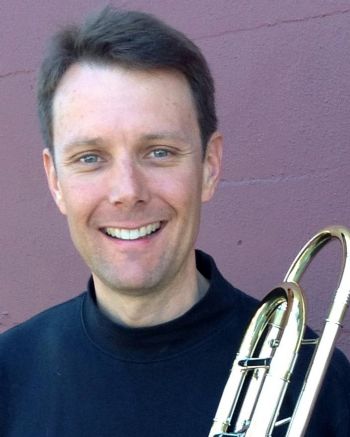|
Chamber
FAMILIAR AND NEW - TRIO NAVARRO'S SPRING CONCERT IN WEILL
by Terry McNeill
Sunday, April 21, 2024
Symphony
MONUMENTAL MAHLER 5TH IN SO CO PHIL'S SEASON ENDING CONCERT
by Terry McNeill
Sunday, April 14, 2024
Chamber
OAKMONT SEASON CLOSES WITH STRAUSS' PASSIONATE SONATA
by Terry McNeill
Thursday, April 11, 2024
Chamber
MORE GOLD THAN KORN AT ALEXANDER SQ CONCERT
by Terry McNeill
Sunday, April 7, 2024
Choral and Vocal
VIBRANT GOOD FRIDAY REQUIEM AT CHURCH OF THE ROSES
by Pamela Hicks Gailey
Friday, March 29, 2024
TWO OLD, TWO NEW AT THE SR SYMPHONY'S MARCH CONCERT IN WEILL
by Peter Lert
Saturday, March 23, 2024
Chamber
NOT A SEVENTH BUT A FIRST AT SPRING LAKE VILLAGE CONCERT
by Terry McNeill
Wednesday, March 20, 2024
THIRTY-THREE PLUS VARIATIONS AND AN OCEAN VIEW
by Terry McNeill
Saturday, March 16, 2024
Choral and Vocal
A ST. JOHN PASSION FOR THE AGES
by Abby Wasserman
Friday, March 8, 2024
Choral and Vocal
SPLENDID SCHUBERT SONGS IN SANET ALLEN RECITAL
by Terry McNeill
Saturday, March 2, 2024
|
 |
 Trombonist Bruce Chrisp |
SOLO AND ENSEMBLE BRASS PEAL POWERFULLY IN SO CO PHIL CONCERT
by Terry McNeill
Sunday, January 24, 2016
Known for its novel programming, the Sonoma County Philharmonic has frequently engaged local soloists, with flutist Kathleen Reynolds and pianists Lauren Xie and Marilyn Thompson coming quickly to mind. In their Jan. 23 concert, featuring German composers, conductor Norman Gamboa united a rare mid 19th mini concerto for trombone with another Sonoma County soloist, Bruce Chrisp.
Playing the Ferdinand David Op. 4 Concertino, Mr. Chrisp gave the 1841 piece a convincing performance without score before 250 in the Santa Rosa High School’s Performing Arts Center. His control of the seemingly unwieldy instrument was surefooted, even when the notes jumped from the low register to repeated and drawn-out high pitches. Thematic statements were boldly projected and the pesky trills confidently attacked.
There was no break between the Allegro and the melodramatic Andante and Mr. Chrisp was impressive in swelling volume in the low register and the beautiful long-held note at the end of the movement.
Most of the audience held their breath until the note stopped.
Music in the concluding Allegro was a little operatic in places, tuneful with a predictable cadenza and a heroically played ending from the soloist. Respond to loud bravos, Mr. Chrisp accepted a bouquet and impishly stick it into the horn of his ineffable instrument.
Brahms’ E Minor Symphony (Op. 98) closed the concert, a conservative format work composed at the time of Wagner’s symphonic radicalism and Mahler’s first Symphony. It may be “old fashioned” in style but its beauty and craftsmanship are beyond reproach. Horns are critical in the opening Allegro and Mr. Gamboa gave the SoCoPhil’s horn quartet, led by Eric Anderson and Bruce Blaikie, full rein. The lovely opening themes were played invitingly and in a dialogue between the first and second violins. Woodwinds (clarinetists Nick Xenelis and Cathy Brooks) and pizzicato strings played a vigorous variant of the first theme under Mr. Gamboa’s restrained direction.
This trenchantly grim movement came to a close with timpanist Walt Bodley’s powerful strokes, and the slow movement began with idyllic music from the horns, and later from flutists Emily Reynolds and Debra Scheuerman. The cutoffs were good and the conductor’s control developed the majesty of the writing.
In the third movement Ms. Reynolds’ piccolo and Mary Gillespie-Greenberg’s ringing triangle made the ever-changing harmonies in a rambunctious Scherzo sound almost giddy.
Brahms wrote a powerful Passacaglia to close his Fourth Symphony, using a form of variations (32 in all) on a repeated bass or reiterated harmonic progression. Woodwinds and brass (now joined for the first time by trombones) are prominent, with rolling drums, and Mr. Gamboa had his hands full keeping continuity and clarity in the tempo changes. There is passion and release in this movement, all driving to a conclusion that blanketed some of the string sounds. The ovation was long enough for the conductor to recognize individual musicians and one section.
Weber’s Overture to the 1824 Opera “Oberon” opened the program, a merry and suave ten-minute work that lacked string power but featured potent brass playing.
|

